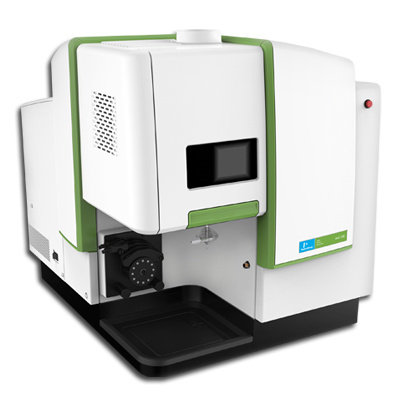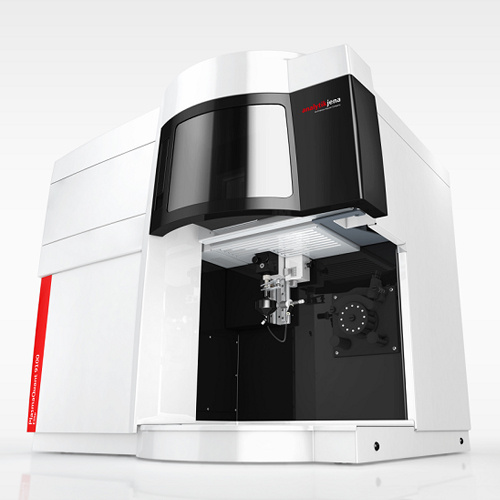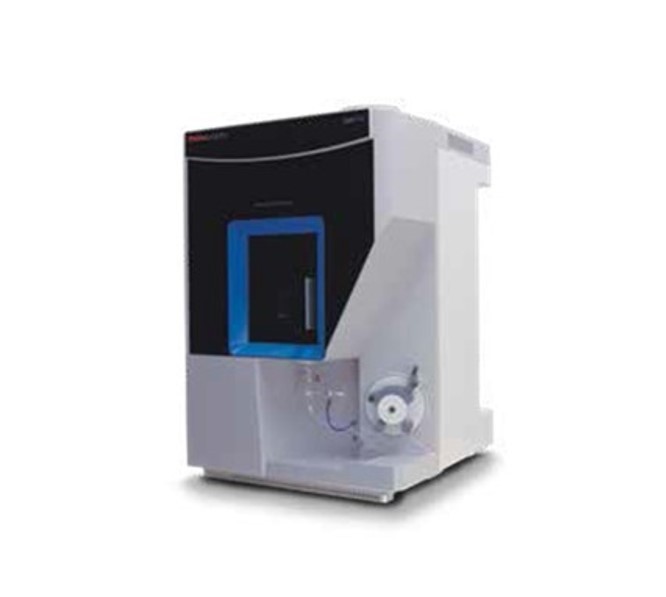仪器种类: 多道型
检出限: 0
重复性: 0
稳定性: 0
波长范围: 0
光学分辨率: 0
Agilent 5100 同步垂直双向观测 (SVDV) ICP-OES 是行业领先的 ICP-OES(也称作 ICP-AES)分析法。凭借独特的智能光谱组合 (DSC) 技术,该系统在单次测量中可同时实现等离子体的水平和垂直观测。通过与速度更快且无需气体吹扫的 VistaChip II CCD 检测器配合使用,5100 ICP-OES(也称作 ICP-AES)能够以一半的氩气用量来运行最具挑战的样品,速度可提升 55%。除了保持 5100 系统的优异性能之外,新一代 ICP Expert 软件和 DSC 技术消除了方法开发过程中的估算并简化了分析过程。
产品特性:
● Agilent 5100 SVDV ICP-OES 的智能光谱组合 (DSC) 技术可在一次读数中获得等离子体的水平和垂直观测结果,减少测量次数和氩气消耗
● 即插即用型垂直炬管可应对最具挑战性的样品(从高基质样品到挥发性有机溶剂)。简单的炬管载架机械装置可自动调整炬管位置并连接气体,确保快速启动仪器并获得良好的重现性
● VistaChip II 检测器是连续波长范围、零气体消耗的高速 CCD 检测器,可快速预热,具有高通量、高灵敏度和最宽的动态范围
● 冷锥接口 (CCI) 通过从轴向光路中去除冷等离子体尾焰来减少自吸收和重组干扰
● 固态射频系统提供可靠、稳定且无需维护的等离子体,可实现长期的分析稳定性
● 智能的工业设计可确保即使在最严苛的环境下,也能通过耐腐蚀材料和内部正压将酸性蒸汽排出,获得可靠性能
● 世界上最小的 ICP-OES 系统节省了宝贵的台面空间,并且将电源、气体、冷却、水和通信等全部连接简单地放置在仪器一侧,有利于维修和维护
● 新一代 ICP Expert 软件具有您熟悉的工作表界面,高级算法提供准确可靠的结果、简单的方法开发和包括预设方法模板的软件程序,显著节省您的时间
● 5100 系统提供三种灵活的配置:垂直火炬同步双向观测、垂直火炬双向观测和垂直观测
保修期: /
是否可延长保修期: 是
现场技术咨询: 有
免费培训: -
免费仪器保养: -
保内维修承诺: -
报修承诺: -


电感耦合等离子体发射光谱仪Avio 200


德国耶拿 PlasmaQuant 9100 高分辨率ICP-OES


Agilent 5800 ICP-OES


赛默飞iCAP PRO系列ICP-OES


新电感耦合等离子体发射光谱仪SEPCTRO ARCOS

ICP-OES电感耦合等离子体发射光谱仪
上海禹重实业有限公司

ICP-6810-A2全谱直读电感耦合等离子体发射光谱仪
美析(中国)仪器有限公司

赛默飞ICAP7000电感等离子体发射光谱仪
青岛澳信质量技术服务有限公司

美国珀金埃尔默Avio 500 电感耦合等离子体发射光谱仪 高灵敏分辨率
苏州赛力威仪器设备有限公司
最多添加5台

用了2年了,仪器的耐盐性和稳定性都是很棒的,关键是分析速度还快,目前是我们实验室的分析主力.